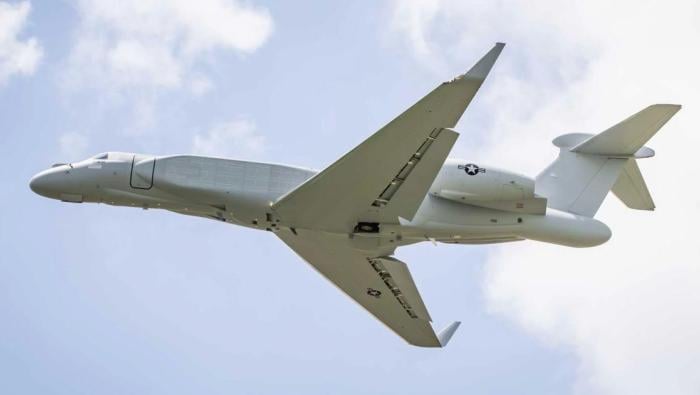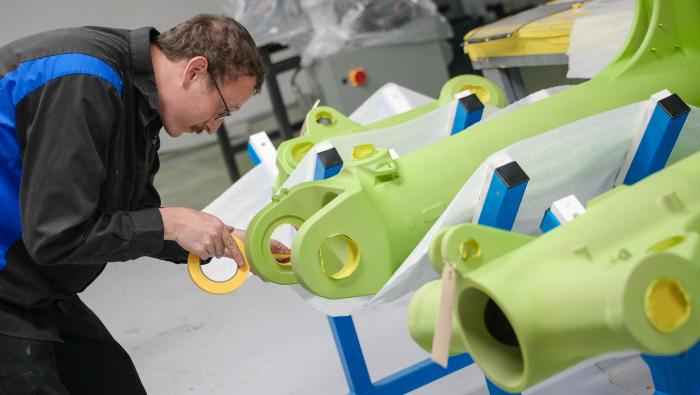|
In recent years, demand and scope for using business aircraft as platforms for a wide array of special missions has been rising. Leading manufacturers in the sector—namely Gulfstream, Bombardier, Embraer, Dassault, and Textron—are all now vying for contracts covering applications ranging from electronic warfare to transportation for government leaders and emergency medical services. A pair of orders from authorities in the Nordic region this year represents a prime example. Finland’s coast guard chose Bombardier’s Challenger 650 jet for its MVX airborne surveillance requirement, while Sweden exercised an option to acquire a third example of the Canadian company’s Global 6000-based S 106 GlobalEye airborne early warning (AEW) platform. |
|
|
Dreams, optimism, and hubris are all possible reasons for these five unsuccessful business aircraft. Funding and navigating the complexities of certification are also other contributors to their downfall. The list includes the all-composite Adam A700, 1980s-era very light Foxjet 600, and the Lear Fan 2100 that famously achieved first flight on "December 32" in an attempt to appease investors. |
|
|
Aug. 29, 2005, is a date few residents of the Gulf Coast will ever forget, as Hurricane Katrina, the costliest disaster in the history of the U.S., rolled ashore. The storm devastated a swath of coastline across several states, and among the hardest-hit communities were the cities of Gulfport and Biloxi, Mississippi. Visitors in many coastal areas there long afterward could still see blank concrete slabs where buildings once stood. Yet the area has shown resilience and can offer no better evidence of that than at Gulfport-Biloxi International Airport (GPT). Like most of the area, the airport was hammered by sustained wind of up to 150 mph for approximately eight hours during the storm, according to Bruce Frallic, the airport's executive director. That wind had an effect on most of the airport's structures. The passenger terminal, which was undergoing a $50 million expansion at the time, had several open walls and suffered massive damage. The wind tore off the roof of the airport's lone FBO, located in a landmark World War II hangar, destroyed the air cargo and rental car centers, battered the control tower and took out all of the airport's navigational aids. Despite losing power and switching to generators, GPT was open to receive relief flights the next day. The first commercial flight returned 10 days later. |
|
|
Sponsor Content: C&L Aviation Group Has managing all your ERJ landing gear overhauls got you feeling overwhelmed? A third-party provider can assist with the entire process, but is outsourcing right for you? In this resource, C&L Aviation Group explains the benefits of working with a provider for all your ERJ landing gear overhaul management needs. |
|
|
GE Aerospace’s Catalyst turboprop engine is meeting and exceeding its targeted performance numbers and is on track for FAA certification by year-end. The engine powers Textron Aviation’s Beechcraft Denali single-engine turboprop, which is set for certification next year. Engines in the flight-test program have logged more than 2,100 hours and 900 flights, which “gives a lot of confidence in the performance,” noted Paul Corkery, head of GE's Catalyst program. Compared to other 1,300-shp powerplants, he said the GE engine burns 18% less fuel while producing 10% more power at altitude. |
|
|
For collectible auto auction impresario Dana Mecum, the decision to break away from the airlines came while waiting at a passenger gate at Chicago’s O’Hare International Airport. “My two-and-a-half-hour flight winds up taking nine hours when you count the drive to the airport,” he said. Two Cessna Citations and a Learjet later, Mecum has no regrets. While he opted for whole aircraft ownership, that solution doesn’t make sense for everyone. There are exceptions, but the general rule of thumb is to avoid whole aircraft ownership unless you are flying 300 to 400 hours per year—or more. There is a large menu of fractional, membership, and prepaid charter and card programs available for those who want to make the switch to private aviation without whole aircraft ownership. |
|
|
Former senior Boeing executive Marc Allen has joined Electra Aero as its CEO at what he said is “a significant inflection point” as it prepares to accelerate work on its planned nine-passenger hybrid-electric STOL aircraft. At its Virginia headquarters, the company is expected to reveal the full-scale design and its name at an event in November. “This is an exciting moment as we move from a high-rate flight test program of the two-seat demonstrator to the nine-seat aircraft, and it will require a significant commitment of resources and getting the transition right,” Allen told AIN. “The demonstrator has confirmed that the concept translates into a deliverable [product] and we are now starting an intense design phase to get into production in 2028 or 2029.” |
|
|
The first of the E-7 Wedgetail airborne early warning and control (AEW&C) aircraft for the Royal Air Force (RAF) has made its test and evaluation flight in the UK. Last week, a Boeing flight test crew conducted the initial flight from Birmingham Airport with the first of three 737 NG airliners that are undergoing modification for their military role at STS Aviation Services in the UK. During the inaugural UK flight on September 20, the Boeing flight test crew conducted functional checks as part of the Wedgetail program’s test and evaluation phase. The E-7 aircraft will be equipped to detect and identify enemy targets at long range and can track multiple airborne and maritime threats simultaneously. |
|
|
Embraer's Eve Building Full-scale eVTOL Prototype At its new facility in Taubaté, Brazil, Eve Air Mobility recently rolled out the first full-scale example of the eVTOL it intends to start delivering in 2027. The spin-off from aerospace group Embraer sees use cases such as air taxis, cargo deliveries, and medical support. With partners, it is developing infrastructure such as air traffic management and vertiports for the all-electric aircraft.
|
|
|
Top Stories This Week on AINonline |
|
|
|
AINalerts is a publication of AIN Media Group, 214 Franklin Avenue, Midland Park, New Jersey. Copyright 2024. All rights reserved. Reproduction in whole or in part without permission is strictly prohibited. |














